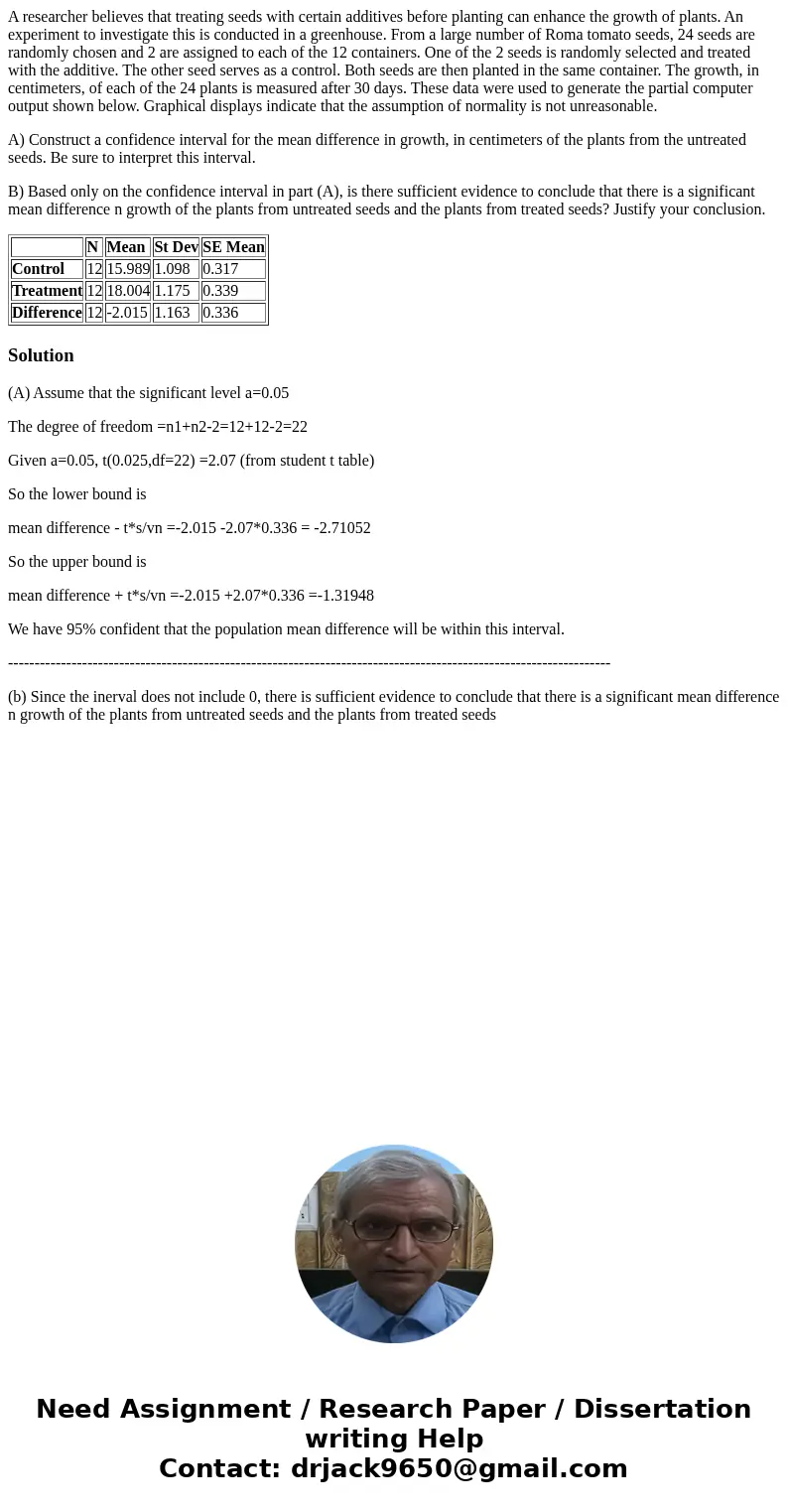A researcher believes that treating seeds with certain addit
A researcher believes that treating seeds with certain additives before planting can enhance the growth of plants. An experiment to investigate this is conducted in a greenhouse. From a large number of Roma tomato seeds, 24 seeds are randomly chosen and 2 are assigned to each of the 12 containers. One of the 2 seeds is randomly selected and treated with the additive. The other seed serves as a control. Both seeds are then planted in the same container. The growth, in centimeters, of each of the 24 plants is measured after 30 days. These data were used to generate the partial computer output shown below. Graphical displays indicate that the assumption of normality is not unreasonable.
A) Construct a confidence interval for the mean difference in growth, in centimeters of the plants from the untreated seeds. Be sure to interpret this interval.
B) Based only on the confidence interval in part (A), is there sufficient evidence to conclude that there is a significant mean difference n growth of the plants from untreated seeds and the plants from treated seeds? Justify your conclusion.
| N | Mean | St Dev | SE Mean | |
| Control | 12 | 15.989 | 1.098 | 0.317 |
| Treatment | 12 | 18.004 | 1.175 | 0.339 |
| Difference | 12 | -2.015 | 1.163 | 0.336 |
Solution
(A) Assume that the significant level a=0.05
The degree of freedom =n1+n2-2=12+12-2=22
Given a=0.05, t(0.025,df=22) =2.07 (from student t table)
So the lower bound is
mean difference - t*s/vn =-2.015 -2.07*0.336 = -2.71052
So the upper bound is
mean difference + t*s/vn =-2.015 +2.07*0.336 =-1.31948
We have 95% confident that the population mean difference will be within this interval.
------------------------------------------------------------------------------------------------------------------
(b) Since the inerval does not include 0, there is sufficient evidence to conclude that there is a significant mean difference n growth of the plants from untreated seeds and the plants from treated seeds

 Homework Sourse
Homework Sourse